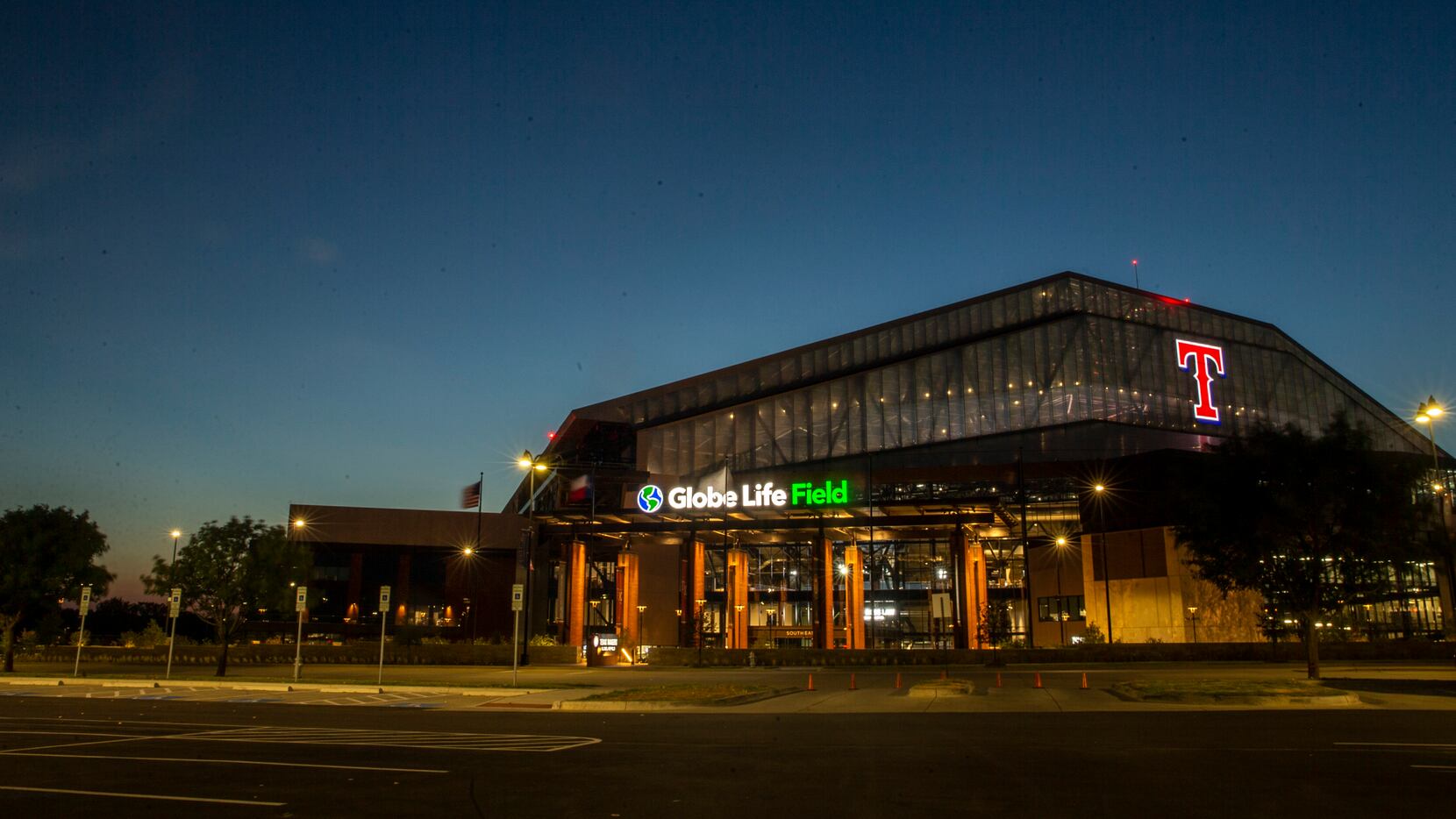SEATTLE — It’s a beautiful morning on Puget Sound. A slight marine layer of haze is leisurely giving way to brilliant sunshine. The breeze, however, isn’t going anywhere. It is a constant and pleasant companion.
Perfect for a youth baseball tournament like the Commissioner’s Cup, pitting teams from MLB Urban Youth academies, including the one from West Dallas, against one another. Or families going to free outdoor baseball clinics conducted by local legends like Edgar Martinez and “King” Felix Hernandez. Or for watching the next generation of baseball’s talent compete in the Futures Game, the biggest on-field activity of the festival leading up to the All-Star Game.
So, why in the world is everybody fixated on the heat?
Simple: It may be the only thing that stands between Arlington and the Rangers in 2024 pulling off perhaps the greatest of All-Star celebrations in an era of ever-growing All-Star celebrations. And make no mistake: MLB has turned this from a game into a celebration.
Yes, when the All-Star Game actually gets played on July 16, 2024, it will be inside the gloriously climate-controlled and roofed Globe Life Field. But the All-Star Game is hardly the focus of All-Star Week. It is merely the conclusion of what has become a jubilee of baseball, exponentially larger than the only other time the Rangers hosted the game in 1995.
“It’s an established fact that it’s going to be warm and humid in Arlington,” says Jeremiah Yolkut, MLB’s Vice President of Global Events. “But fans go there year-round. There is so much we can do to keep things cool and comfortable, safely. We want to build something that is comfortable and enjoyable. We can’t just pick up Seattle and do it in Arlington. It may look a little different than this year, but it will be a great time.”
As he says this, Yolkut is sitting on a picnic bench on the concourse of Lumen Field, the Seattle Seahawks’ home, which is across the street from the site of the game, T Mobile Park. Activities spill along the concourse, onto the field itself and into an attached convention center. It is all part of Play Ball Park, which is part of the All-Star village, which was all part of Commissioner Rob Manfred’s vision for growing baseball.
And judging by what All-Star Week has become, if the sport hasn’t grown, it’s certainly not from a lack of effort.
Just across the concourse from Yolkut, Mark Jacoby of Denton, whose Rangers’ City Connect T-shirt stands out in a sea of Julio Rodriguez and Ken Griffey Jr. jerseys, is watching as his 6-year-old daughter, Charli, is zipped into a velcro suit. Then Mark hoists her up and fastens her to a felt “wall,” a glove on her hand as she “robs” a home run.
She’s already run the bases, done a virtual batting practice, had herself introduced on a scoreboard as she is “coming to bat.” Later, if they can negotiate the crowds, Mark and, wife, Mikaylee, both Seattle natives, may take Charli over to the booth where she can be announced as the Rangers’ first-round draft pick.
“This is absolutely awesome for kids,” Mark said. “Making this an immersive experience for everyone is just really nice. Tickets to the game are going to be really expensive. But there is something that everybody can get into without having to shell out the big bucks.”
This has been part of Yolkut’s team approach to growing the pregame week. Play Ball Park has morphed from a strictly-ticketed Fan Fest to an area with a ring of free activities. Seattle officials wanted MLB to include more of those, so there were movie-watching parties around downtown.
This year alone, the week included the youth tournament, a matchup of players from historically black colleges and universities (the Swingman Classic) that was the inspired idea of Ken Griffey Jr., the Futures Game, celebrity softball game, the MLB draft, the Home Run Derby, the Red Carpet show from the Public Market and, oh, yeah, the game.
“By the time you get to game day, you are almost exhausted,” joked Rob Matwick, the Rangers’ executive vice president for business operations. “There is just so much more.”
The Rangers’ situation provides MLB an opportunity to perhaps make the festival seem bigger than ever. With Texas Live!, Choctaw Stadium and the new convention center inside the Loews hotel, expected to open early in 2024 all available, the footprint is enormous. Even when the Super Bowl was in Arlington, most of the other activities were spread across North Texas. The All-Star experience may seem larger than anything that has come before.
“There is tremendous opportunity to represent the Rangers and MLB to the world,” Matwick said. “It gives us the opportunity to use so many pieces that can function together or independently.”
Matwick, one of about 40 Rangers officials who made the trip to Seattle to observe the festivities, should know about the opportunity better than most. This will be the third All-Star Game in which he’s been a part of the host committee. He was with the Astros as a PR man in 1986 and as an operations exec in 2004. There was significant growth in the game from the first to the second. But trying to compare even the second of those to what it is now is impossible.
The red carpet show, for example, is a newer element. Six hours before the game Tuesday, the length of the Public Market was lined at least five people deep on both sides craning to get pictures of or with All-Stars strutting their best fits. Two days before that, the first round of the draft, which only became a public event in 2021, drew more than 3,000 fans. The draft continues to draw more eyes each year.
Put it this way: The last time the All-Star Game came to Arlington, the game consisted of what was supposed to be a five-inning Legends Game and the Home Run Derby. Both were afternoon affairs, taped for airing on ESPN later in the evening. It was 102 degrees at first pitch. After one inning, Legends rep Joe Garagiola essentially told MLB officials, if the league didn’t kill the rest of the game, it risked killing one of the legends.
It did, however, set the stage for the growth of the Home Run Derby from TV filler to a must-watch event. The way the Rangers and ESPN officials remember it: Curtailing the Derby left the possibility of a lot of dead air for the TV show. On the spot, the Derby rules were tweaked. An extra round was added to stretch for TV. The Derby has continued to evolve yearly, but the three-round format has remained the same.
“After being in Seattle this week, I am even more confident that the Arlington Entertainment District is the perfect location for the 2024 All-Star Game and surrounding events,” said John Blake, the Rangers’ executive vice president of public affairs. “The All-Star experience is much more expansive than it was in 1995, and the Rangers and MLB will put on a great show.”
To this point, MLB and the Rangers don’t have a full feel for exactly what they will do. Yolkut says he expects both Texas music and Latin American culture will play big roles in the atmosphere. Beyond that, it’s still all in the workshop phase.
“We’ve become much more intentional to be localized,” Yolkut said. “We want to do something that is quintessential to the local market. We want [local] fans to feel like ‘they really thought about us,’ when putting together the experience. This is a once in 30-year experience.”
And based on where the game is now compared with the last time it was in Arlington, it will feel completely different.
On Twitter: @Evan_P_Grant
Find more Rangers coverage from The Dallas Morning News here.

